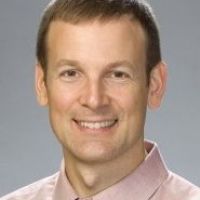IDOCM_1D
Integrated one dimensional physically-based dissolved organic carbon model
A one-dimensional transport model for heat, and biodegradeable and refractory dissolved organic carbon in soils
Model Category: Numerical
Image: Yi Mei tested the model by conducting a field artificial rain experiment on one of the soil lysimeters installed in the White Clay Creek watershed. The figure shows that the model can replicate the data well.
-
Christina, GRAD STUDENT
-
Christina, INVESTIGATOR
-
Christina, INVESTIGATOR
-
Christina, INVESTIGATOR
-
Christina, INVESTIGATOR
This model is a physically based, distributed model that considers water flow and the transport of heat, and both biodegradeable and refractory dissolved organic carbon (BDOC and RDOC) in soils. Macropores were considered by adopting a dual permeability modeling approach. The model can be verified by one-dimensional soil core leaching experiment data. Climate forcing data, soil temperature data are needed to run the model.
Quantitative estimation of watershed carbon balance is one of the goals of the CZO project. Dissolved organic carbon (DOC) supports microbial activity in both the terrestrical and aquatic ecosystems. In addition, it is hypothesized [Aufdenkampe et al. 2011] that DOC complexation onto mineral surfaces constitutes a significant pathway for long-term carbon sequestration. Quantitative understanding its dynamic nature and its contribution to the stream network is thus of great importance.
This model can give a mechanistic description on the DOC transport through soils and it is capable of estimating DOC flux at different soil horizons. We used this model as a tool to explore the hypothesis that the delivery of DOC to the water table occurs primarily in the riparian zone [Mei etc., 2012]. It can also be used to understand macropore effects on DOC transport in soils. Thus this model is tightly related to the CZO research in terms of organic carbon in watershed.
References
Aufdenkampe, A. K., E. Mayorga, P. A. Raymond, J. M. Melack, S. C. Doney, S. R. Alin, R. E. Aalto, and K. Yoo. 2011. Riverine coupling of biogeochemical cycles between land, oceans, and atmosphere. Frontiers in Ecology and the Environment 9: 53–60. doi:10.1890/100014
Mei, Y., G. M. Hornberger, L. A. Kaplan, J. D. Newbold, and A. K. Aufdenkampe (2012), Estimation of dissolved organic carbon contribution from hillslope soils to a headwater stream, Water Resour. Res., doi:10.1029/2011WR010815
Publications
2012
Estimation of dissolved organic carbon contribution from hillslope soils to a headwater stream. Mei, Y., G. M. Hornberger, L. A. Kaplan, J. D. Newbold, and A. K. Aufdenkampe (2012): Water Resour. Res. 48(9)
Explore Further








